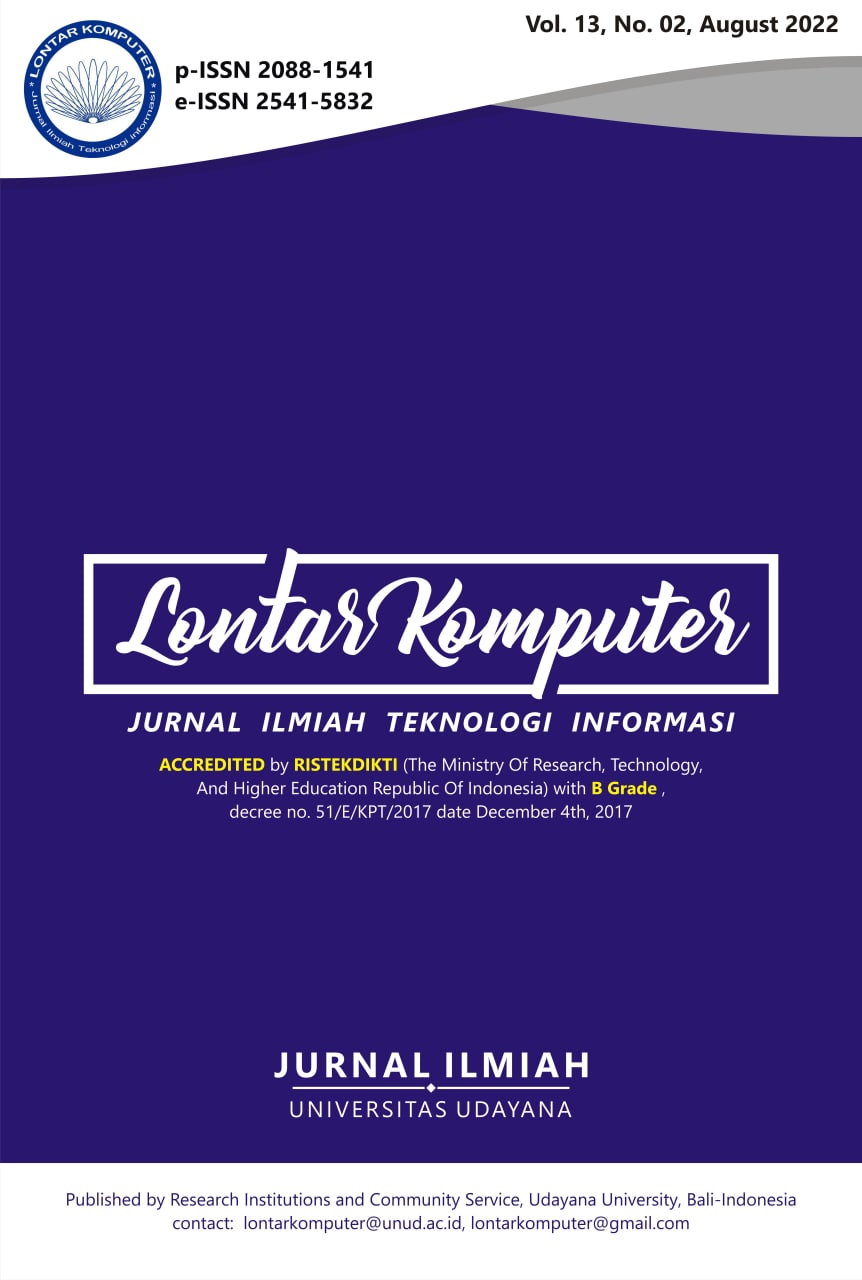Dynamic Neural Network Model Design for Solar Radiation Forecast
Abstract
Sunlight is an energy source that is a gift from God and is a source of life for living things, including humans as caliphs on earth. Judging from its impact, solar radiation is an environmental parameter that has positive and negative effects on human life. The pattern of distribution of solar radiation is important information for human life to be the attention of many people, both policymakers and researchers in the field of environment. This study objects to modeling the radiation of solar using a dynamic neural network (DNN) model. The data used in this research is the meteorological data of Mataram City for the period January 2018 to May 2019, which was obtained from the Department of Environment and Forestry of West Nusa Tenggara Province. In the development of this model, solar radiation was seen as a function of a combination of several variables related to meteorological (wind speed, wind direction, humidity, air pressure, and air temperature) and solar radiation data at some previous time. Considering the advantages and effectiveness of the activation function in the proposed DNN model learning process, this study's network learning in the hidden layer employed two activation functions: hyperbolic tangent (Type I) and hyperbolic tangent sigmoid functions (Type II). The output aggregation used two aggregates for each type: the weighted aggregation function (Type a) and the maximum function (Type b). The results of computer simulations based on the root of mean square error (RMSE) measure indicate that the model for modeling solar radiation in these two cases is quite accurate. Furthermore, it could be seen that the model's performance using the hyperbolic tangent activation function (Type b) is relatively better than the hyperbolic tangent sigmoid type of the activation function (Type a), with the RMSE values are 18.3924 and 18.4005, respectively.
Downloads
References
[2] Anonim, “NOSEHerbalindo Glosarium,” NoseHerbalindo Laman, 2019. [Online]. Available: https://nose.co.id/ glosarium/ultraviolet
[3] J. Tovar-Pescador, "Modelling the statistical properties of solar radiation and proposal of a technique based on boltzmann statistics," Modeling Solar Radiation at the Earth's Surface: Recent Advances, pp. 55–91, 2008, doi: 10.1007/978-3-540-77455-6_3.
[4] A. D. Şahin and Z. Şen, "Solar irradiation estimation methods from sunshine and cloud cover data," Modeling Solar Radiation at the Earth's Surface: Recent Advances, pp. 145–173, 2008, doi: 10.1007/978-3-540-77455-6_6.
[5] M. Paulescu, "Solar irradiation via air temperature data," Modeling Solar Radiation at the Earth's Surface: Recent Advances, pp. 175–192, 2008, doi: 10.1007/978-3-540-77455-6_7.
[6] F. S. Tymvios, S. C. Michaelides, and C. S. Skouteli, "Estimation of surface solar radiation with artificial neural networks," Modeling Solar Radiation at the Earth's Surface: Recent Advances, pp. 221–256, 2008, doi: 10.1007/978-3-540-77455-6_9.
[7] S. Bahri, “Modeling of Solar Radiation Using the Wavelet Neural Network Model in Mataram City Lombok Island,” Lontar Komputer : Jurnal Ilmiah Teknologi Informasi, vol. 11, no. 3, p. 178, Dec. 2020, doi: 10.24843/lkjiti.2020.v11.i03.p06.
[8] J. Boland, "Time series modeling of solar radiation," Modeling Solar Radiation at the Earth's Surface: Recent Advances, no. 1, pp. 283–312, 2008, doi: 10.1007/978-3-540-77455-6_11.
[9] L. Mora-López, "A new procedure to generate solar radiation time series from achine learning theory," Modeling Solar Radiation at the Earth's Surface: Recent Advances, no. 1977, pp. 313–326, 2008, doi: 10.1007/978-3-540-77455-6_12.
[10] L. Fortuna, G. Nunnari, and S. Nunnaru, Nonlinear Modeling of Soalar Radiation and Wind Speed Time Series. Switzerland: Springer, 2016. doi: 10.1007/978-3-319-38764-2.
[11] A. J. Hussain, P. Liatsis, M. Khalaf, H. Tawfik, and H. Al-Asker, "A Dynamic Neural Network Architecture with Immunology Inspired Optimization for Weather Data Forecasting," Big Data Research, vol. 14, pp. 81–92, Dec. 2018, doi: 10.1016/j.bdr.2018.04.002.
[12] M. Akhtar, M. U. G. Kraemer, and L. M. Gardner, "A dynamic neural network model for predicting risk of Zika in real time," BMC Medicine, vol. 17, no. 1, Sep. 2019, doi: 10.1186/s12916-019-1389-3.
[13] K. Hami-Eddine, P. Klein, L. Richard, and A. Furniss, "Anomaly detection using dynamic neural networks, classification of prestack data," in Society of Exploration Geophysicists International Exposition and 82nd Annual Meeting 2012, SEG 2012, 2012, pp. 2005–2009. doi: 10.1190/segam2012-1222.1.
[14] IEEE Control Systems Society. Chapter Malaysia, Proceedings: 2013 IEEE 9th International Colloquium on Signal Processing and Its Applications, CSPA 2013, 8-10 March 2013, Berjaya Times Square Hotel, Kuala Lumpur, Malaysia.
[15] Wu, Di, et al., "Deep Dynamic Neural Networks for Multimodal Gesture Segmentation and Recognition." IEEE Transactions on Pattern Analysis and Machine Intelligence, vol.38, no. 8, 2016, pp.1583-1597, doi: 10.1109/TPAMI.2016.2537340.
[16] U. P. Indian Institute of Information Technology (Vārānasi, Institute of Electrical and Electronics Engineers. Uttar Pradesh Section, and Institute of Electrical and Electronics Engineers, 2016 IEEE Uttar Pradesh Section Conference on Electrical, Computer and Electronics Engineering (UPCON): Indian Institute of Technology (Banaras Hindu University), Varanasi, India, Dec 9-11, 2016.

This work is licensed under a Creative Commons Attribution 4.0 International License.
The Authors submitting a manuscript do so on the understanding that if accepted for publication, the copyright of the article shall be assigned to Jurnal Lontar Komputer as the publisher of the journal. Copyright encompasses exclusive rights to reproduce and deliver the article in all forms and media, as well as translations. The reproduction of any part of this journal (printed or online) will be allowed only with written permission from Jurnal Lontar Komputer. The Editorial Board of Jurnal Lontar Komputer makes every effort to ensure that no wrong or misleading data, opinions, or statements be published in the journal.
 This work is licensed under a Creative Commons Attribution 4.0 International License.
This work is licensed under a Creative Commons Attribution 4.0 International License.























